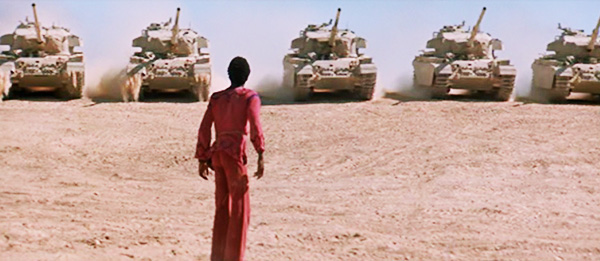
I watch Jesus Christ Superstar (1973) every Easter and Fiddler On The Roof (1971) every Christmas Eve. Nothing says major holidays like a Norman Jewison flick. For a while I’d watch The Last Temptation Of Christ (1988) on Good Friday, then for a brief period I watched Cecil B. DeMille’s The King Of Kings (1927) on Holy Saturday as well. I suppose this is all due to my Catholic upbringing. However, the steadfast family tradition has always been to watch Jesus Christ Superstar.
Jewison’s film is based on a stage musical adapted from a concept album. In my opinion Jesus Christ Superstar is the best thing either Tim Rice or Andrew Lloyd Webber have written, together or apart. It’s a rock opera, wall to wall with music, every song propelling the narrative and exploring the characters. This allows Jewison to stage the drama before the camera with a focus on choreography and blocking. The tableaus that accompany each number feel distinct, almost isolated, connected only by sound. Fiddler On The Roof is classical in its aesthetic while Jesus Christ Superstar is overwhelmingly modern.
Due to Jewison’s choice to dress the cast in contemporary clothing and shooting on location Jesus Christ Superstar becomes a sort of hippie dream of the New Testament. Shots of Roman soldiers in pink tank-tops and silver helmets patrolling the desert with tanks recall news footage of the armed responses to anti-Vietnam War and civil rights protests in the United States. Christ is elevated, depicted as the forerunner to non-violent protest and resistance. These parallels are constantly being implied by Jewison’s minimalist mise-en-scène.
What carries the film dramatically isn’t the Roman presence nor the Passion, but the love triangle between Jesus (Ted Neeley), Judas (Carl Anderson) and Mary Magdalene (Yvonne Elliman). The recurring theme, I Don’t Know How To Love Him, sung first by Mary and then Judas articulates their desires regarding Jesus. Judas is seen as a sympathetic character whose zealotry has him torn between allegiances. Carl Anderson steals the show as Judas, beginning with his opening number, Heaven On Their Minds. Immediately the audience is ensnared by Anderson’s charismatic performance and understands the inner conflict Judas faces. No other character is quite so well developed, not even Jesus.
There’s also a lot that’s silly about Jesus Christ Superstar. Josh Mostel has an amazing number that has to be seen to be believed for its sheer campiness. There are also plenty of short musical pieces designed to move the plot that are usually given to the Apostles to sing. These moments, What’s The Buzz? and Always Hoped That I’d Be An Apostle, break the fourth wall, tongue in cheek, and are clearly meant to be funny.
Things will get even sillier if, like I did, you explore the careers of some of these performers post-Jesus Christ Superstar. For instance, Ted Neeley has a number of albums, mostly of covers, that feature some of the goofiest artwork I’ve ever seen. The man has some pipes, but those album covers are ridiculous.
